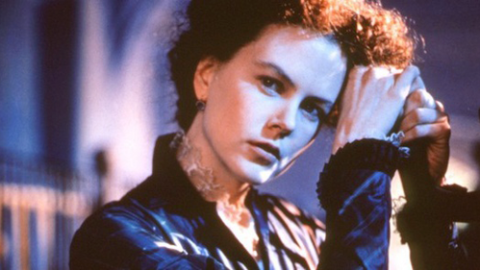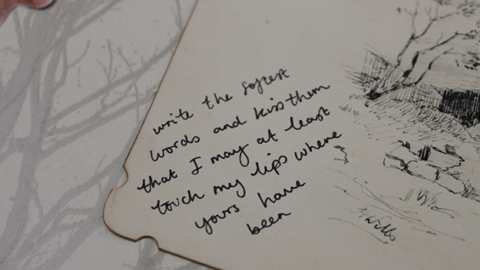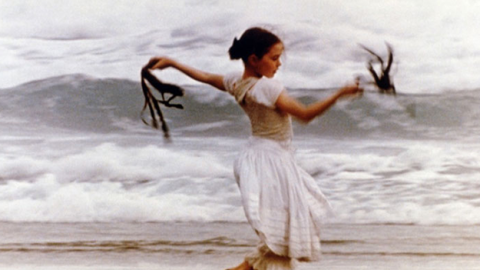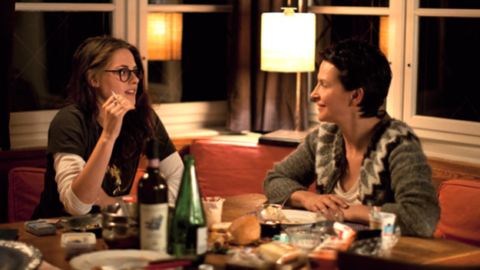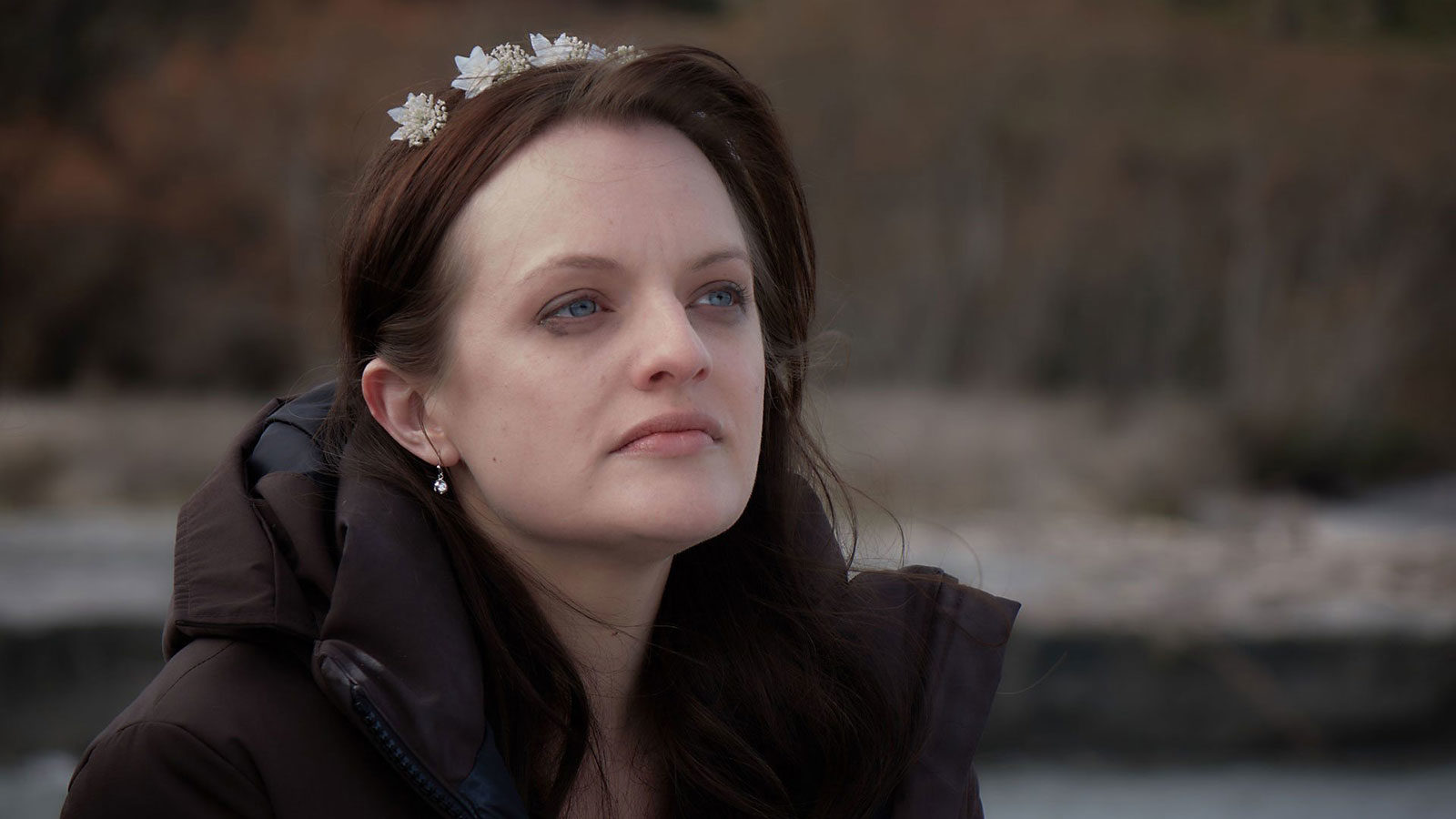
Diving into the Wreck
Top of the Lake: China Girl, Jane Campion’s engrossing return to long-form television, begins with protagonist Robin Griffin (Elisabeth Moss) relocated from the verdant and watery surroundings of Queenstown, New Zealand, to the urban jungle of Sydney, Australia. Audiences might recall Robin’s tenacious crime-solving in the first Top of the Lake series as a hard-won but invigorating triumph. China Girl, however, paints a different portrait. New colleagues in the Sydney police force, especially the men, are more likely to belittle Robin’s achievements and pry into her most painful secrets than to credit her ingenuity. Even in isolation, Robin looks like she’s barely holding herself together, and this is before she gets drawn into a new web of misogynistic malfeasance, involving a dead prostitute too disfigured for anyone to identify. Worse still, the audience knows before Robin does that the daughter she gave up for adoption two days after bearing her—now a teenager named Mary (Alice Englert), whom Robin is at last on the cusp of meeting—is also enmeshed in this horrifying case.

Robin may be skidding from disaster to disaster, but Top of the Lake: China Girl, which Campion co-wrote with Gerard Lee and co-directed with Ariel Kleiman, moves from strength to strength. The series explores the interlocking crises of multiple characters with stylistic precision and sociological sweep, its mercurial ambience combining suspense, tragedy, and the occasional but welcome note of mordant humor. Multifaceted narratives told in singular tones have been touchstones of Campion’s work throughout her three decades of renown among cinephiles, starting in 1986, when she became the first female filmmaker to claim the Palme d’Or for short films at Cannes, for Peel: An Exercise in Discipline. Seven years later, Campion also became the first woman to earn the Palme d’Or for feature filmmaking, for the Oscar-winning The Piano (93). That no other woman has followed in those particular footsteps was a sad fact much decried at this year’s Cannes, where all six hours of Top of the Lake: China Girl screened out of competition, earning perhaps the strongest reviews of the fortnight.
In September, China Girl premieres on SundanceTV. At the same time, New York City audiences will have the chance to experience the series in cinemas as part of Lincoln Center’s complete retrospective of Campion’s features. Two of them, the reverse-chronology charmer Two Friends (86) and An Angel at My Table (90), a quietly epic biography of Kiwi author Janet Frame, were produced for television before graduating to bigger screens. These and other Campion films, from the jagged sibling-rivalry dramedy Sweetie (89) to the exquisitely gelid widescreen staging of Henry James’s The Portrait of a Lady (96) to the daringly photographed and erotically intrepid In the Cut (03), evince an artist with a distinctive gaze on human fallibility and errant desire. Though expressed in a wide range of registers, what unites all of Campion’s projects, including China Girl, are their shared allergies to boring shots and demure behavior.
Before this interview began, she graciously received my grateful testimonies that her body of work, especially The Piano, was the single greatest influence on my own career choices—a kind of compliment she has heard before, sometimes publicly, as when Xavier Dolan melted into tears and eventually into her arms upon receiving his own Cannes prize from Campion’s jury in 2014. Still, for such an influential artist with a distinctive sensibility, Campion is just as eager to praise collaborators and promote new talents as to unpack or, on occasion, defend her own work. Not every movie along the way has garnered equal hosannas, but with China Girl, everyone seems to agree she’s on the top of her game.
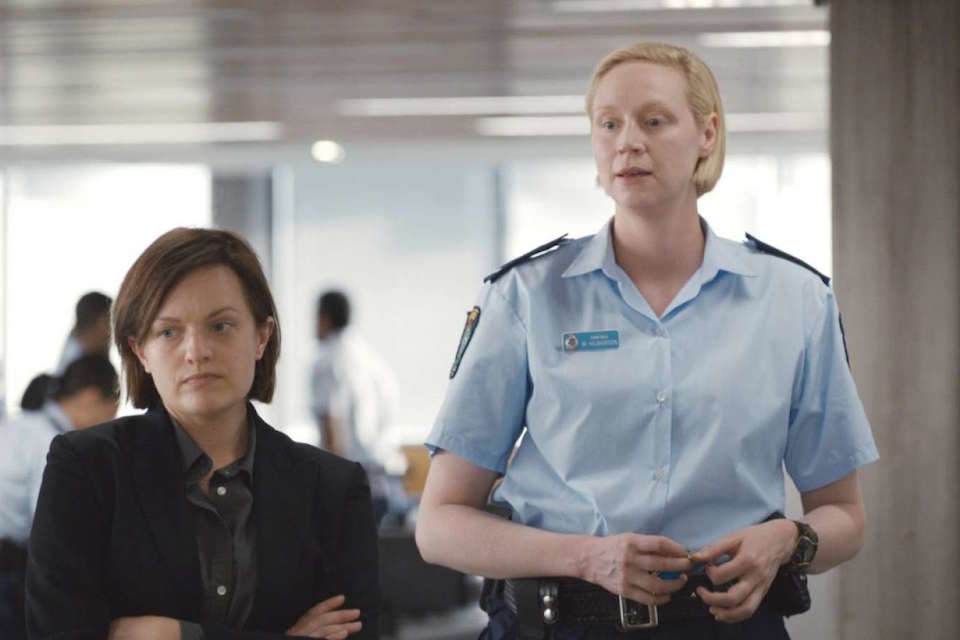
As I’m sure you know, the double occasion for this interview is the retrospective of your career that will happen in September at Lincoln Center, coinciding with Top of the Lake: China Girl premiering on SundanceTV in the States. And I know this may be an awkward question for you to answer, but I’m curious: from your perspective, what sense do you have of what a “Jane Campion project” means to people by this point in your career, either within your audience or in the industry?
Oh, my God—I have no clue what it might signify. [Laughs] I really, really don’t know. I suppose I have my hopes what it might mean, but I’m sure the truth is quite different!
When people approach you either formally or informally to discuss your work, do you get the sense there’s an aspect of it they are most invested in, or tend to want to talk to you about?
I have been approached several times in ways I felt quite humbled about. I really had no idea how much impact one of my stories can have on a person’s life. And obviously, that story don’t have that impact on my own life because I made it and I know it. But when I was young and discovering cinema, I would see films and discover my life through them. You know, they were really important to me. So I know they have that potential to be life-changing in that way—as in your story you just told me. People have felt that way about certain films of mine, perhaps mostly An Angel at My Table and more recently Bright Star, and occasionally Holy Smoke. It’s one of those things where viewers add or bring something to a movie you didn’t even know was possible.
Conversely, then, from your own investment in your material, what questions are you still asking in Top of the Lake: China Girl or in the previous Top of the Lake that you feel like you’ve been probing throughout your career?
Well, I remember sitting in my kitchen recently speaking to Ariel Kleiman, who’s the co-director on China Girl, and we were sort of saying how neither of us could figure out a way to talk about our work. The best we knew how to do was to talk about the cinema we loved ourselves—and then we both got quite teary and excited. Just how these filmmakers who we discovered when we were growing up still enhance our own work for us, and how they transformed our sense of what we could do. I’m still paying back to that initial gift those filmmakers gave to me, so what I try to do is just attempt to join that group, and work whatever kind of magic might inspire others. But of course, what all of those filmmakers did then or do now, and how they do it, remains a big mystery.
Who are some of those filmmakers whom you feel you’re paying back?
They really are so various, from Liliana Cavani to De Palma to Bertolucci. Wim Wenders, Truffaut, Resnais, Renoir—I really do have such wide-ranging tastes. Nicolas Roeg is a big influence on me, as are David Lynch, Jim Jarmusch. They’ve all just meant so much to me that you just try your best and let everyone else decide.
For me, trying my best means just opening myself to let a story or idea be what it is, and to really feel it—whatever it is that I’m so charged up about. Ideally, you really want to have a kind of energy about something that will keep you inspired.
With Top of the Lake: China Girl, my “eureka” moment was definitely not when people would say, “Look at everyone tuning in, staying at home, responding to it—we’ve got something here already, and if we do another one, we could make even more money!” And you go, well, that’s good, but if it’s just that, it’s not really amounting to inspiration. Especially when there was such a beautiful freedom to making the first Top of the Lake. Creating that caravan park with all those post-menopausal women, surrounding that Holly Hunter character? That was great. [Laughs]
I kept trying to think of stories that would continue there, and I really just couldn’t. I decided I just needed to abandon that landscape for the meantime, and everything it meant. From that point, I sort of start quarrying for individual elements that might form into something new—the scenes, the crime, the place. In fact, in China Girl, I was more attuned to the way the crime worked, and how it spoke to larger themes in the story, which allow it to have more expansive impact or more long-lasting value.
So that’s my basic sense of what I do. You try to find material that’s intrinsically interesting, and then you have to find a structure that works to evolve whatever it is that’s interesting about it. And I guess I have good instincts for what that might be.
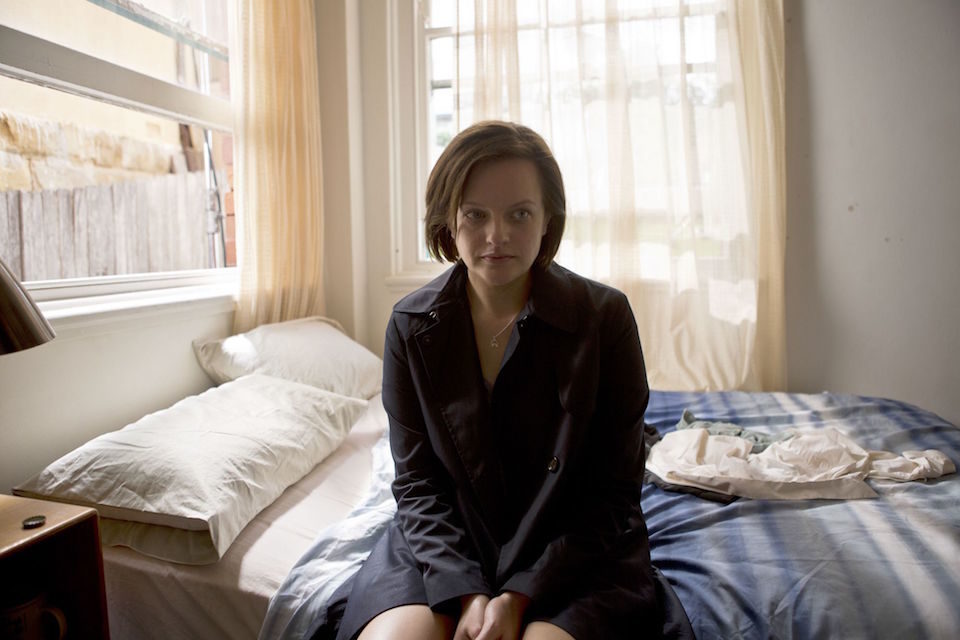
In just the first two episodes of China Girl, we see powerful images that also operate as mysterious gestalts for the whole series. One is that rolling suitcase pushed into the ocean in the very first scene, trailing all that black hair from its cracked shell, indicating the dead body trapped inside. Another is the wedding dress suspended over the raging pyre until the flames consume it. As a viewer, it becomes tempting to conjecture that these kinds of images must arrive early to you and serve as starting-points from which you work outward and find that structure that will accommodate them and tease them out.
You’re right about that. I do sometimes conceive an image that proves seminal for me, and that you work up to and out from, like that bride’s dress hanging over that pyre. The hair coming out of the suitcase possibly came a bit later, but then the shot where the hair sort of slips back into the suitcase as Robin opens it turned into a major inspiration moving forward. I guess that dwelling on detail is something that really attracts my brain. I trust in detail.
I think at this point my co-writer Gerard Lee and I have developed a pretty good control of fairly unusual talents—which includes making things serious and sad, and yet really funny. That is hard to keep together, but that’s us. It’s how we see life and how we tease each other, and how we live every day. That’s why I wanted to bring to this kind of material that view of the world that’s slightly slanted, and sort of unexpected. And I think what we offer in that way is substantial—a way of living with life, of accepting beauties and struggles together, you know? And that’s just how I am: I love to have fun, I love to laugh.
There are so many moments in China Girl that, despite everything, are hilarious even when they’re played fairly deadpan, like that line you wrote for Mary where she defends her older and quite pretentious boyfriend, insisting, “You know, everybody talks about reading, but he’s actually done it!” Or when the madam of the brothel insists on rules like “No food in the sex room.”
Yes, exactly! That sort of thing is us.
Extending, then, from these comments about working with Gerard, what I find fun watching Top of the Lake is tracking how many different collaborators in so many departments you’ve continued working with from project to project throughout your career, and how their work changes, too, but also keeps serving that tone. For example, as I’m watching that macabre image of the submerged suitcase—which to me is such a Campion image—I’m not expecting slow, light jazz to accompany a shot like that, as the camera crawls across the sea floor. So, whether it’s your composer Mark Bradshaw or your editor Alexandre de Franceschi, who have worked on most of your recent projects, I’m curious how vital it was to you to keep maintaining those collaborations, or when you wanted to change things up and work with someone new?
That’s always a difficult question. I suppose you have to trust your instincts. If what you’re trying to do in your work is discover, you have to make sure you’re working in a way that’s not getting safe and that keeps surprising you.
One reason I love working with Mark, who’s amazing, is that he was quite a young composer when I first worked with him on the Keats project—and that’s actually one of the reasons I chose him. I mean, who trusts anyone under 25 to do anything? But in fact, Keats died at 25, so I thought, you know, I had better change my thinking, and it was wonderful. I’ve now been a supporter of Mark’s for quite a long time, and I think he’s made a quantum leap with this particular series. What he came up with was so beautiful, and I wasn’t expecting at all what he did.
In fact, there’s a funny story about how that began. I always start by asking Mark for some ideas—he looks at the script and puts a couple pieces of music together, so I have some sense where we might be going. He sent me some things, but I’m very bad with computer downloading and stuff like that. So, I was going onto my iTunes to listen to them, but what I actually opened was the very beginning of a Nina Simone song. And I was just thinking, “Oh my god, I love this opening! So great, and so cool!”—and this of course was before she started singing, so I just thought it was a musical piece. [Laughs]
So, I told Mark, I wasn’t so inspired by the sketches, but this other thing happened, and what does he think? And he listened! He even said, “Look, I’m going to New York, which will be a great chance to look more into that”—thinking of the jazz piano and some other ideas built around the tango. So he did, and all of us just fell in love with it.
With Alexandre, we’ve got a very good friendship, though I think the honeymoon might be over, in the sense that now we tend to be just very straight with each other. At times, our personalities can even sort of annoy each other [laughs], but what’s great is that once we’re at work, we don’t waste any time on niceties. And that’s very hard to do unless you’re incredibly confident in someone.
With Gerard, he is probably one of the most remarkable people ever. Everybody always loves Gerard. He has got the most adorable personality—he is incredibly fun to hang out with. And Ariel—this is my first time working with him, but he’s just a genius. He’s made some startling shorts, and he chose this material because he likes the material and loves the humor, and he just loves the characters. He’s really quite brilliant. He’s got a mathematician’s mind and also a sports brain—he used to be a basketball player—so he thinks in a very dimensional way about shots, whereas I really have to study that kind of thing. I really do love his work.
When you’re working together, I suppose everything good about a person can turn into a kind of threat: “Oh, they’re so much better than me,” that sort of thing. But once you get past that, it’s really fun, that collaborative quality to the work. And it’s one of the reasons I love working, is to get all of us involved in coming up with solutions. I think my own skills are very particular, and I know what they are, more or less. I’m really good at weaving material together, and I know how to lend myself completely to the process, thinking up visuals or other ideas that just come to me amidst the work. In that sense, I’m good at making myself available. Some things I have to work at, other things are more natural.
My work with actors, I really don’t know how that always comes together so well. I communicate with them on such an intuitive level, but they seem to get it. I really get close to them, and they feel like I’m genuinely listening to them and that I’ll go anywhere with them. I often think all an actor needs much beyond that level of trust is the space. Which is ironic, because in my own life, I’m sort of notoriously bad at listening!
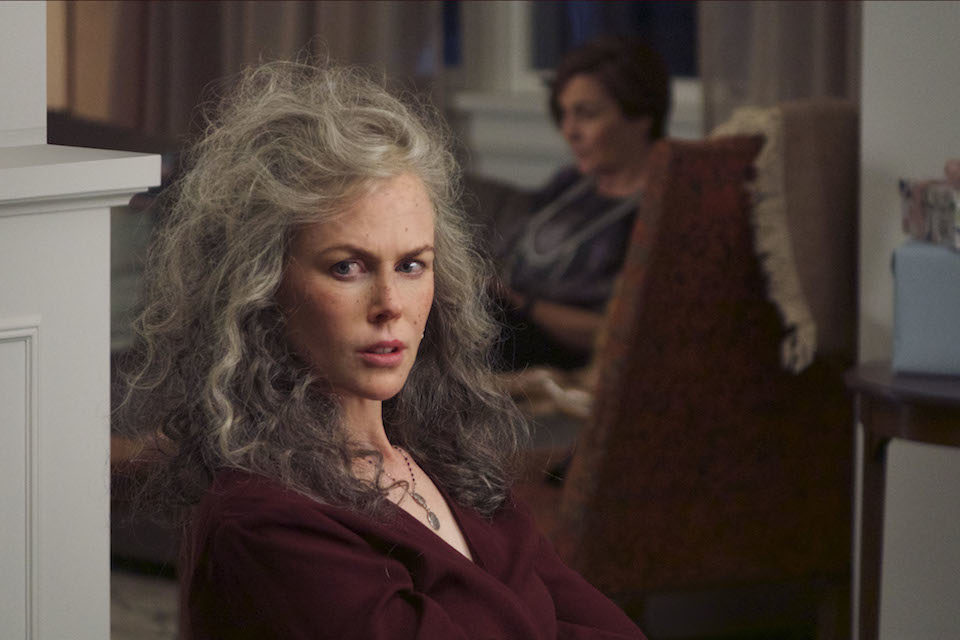
I also have a more culturally grounded question about China Girl and its difference from the first Top of the Lake. Every friend and family member I have from Australia or New Zealand feels strongly that the rest of the world tends to conflate them too closely together.
That’s right.
So, I know you’ve been asked already many times—and you’ve even alluded to it today—about the differences between the natural geography and topography of the first Top of the Lake and the very different urban landscape of China Girl. But I was actually curious how it was a different challenge to be writing this kind of story for the temperaments or psychologies of Australian characters rather than Kiwi characters. Did that factor at all in how you wrote or directed?
I don’t know whether it did. I myself am kind of a happy hybrid. I think these Top of the Lake characters are pretty cross-Tasman, and some of the worst and best of them were from Scotland. Although, there is a real New Zealand character, even among those people who also have a more generally Antipodean quality. People from New Zealand are incredibly modest, incredibly hardworking, and incredibly hard on themselves. Australians are a bit more relaxed, compared to that earnestness, I suppose, which you find so strongly in New Zealand. That quality can be best understood, I think, based on the way New Zealand was colonized, from a point of view that was deliberately seeking to establish a new kind of ideal society, away from England. Those who came generally arrived with a noble hope of bettering themselves.
Whereas Australia was colonized, as you know, from what was left of a penal colony—people someone wanted to dispose of, which has left most Australians with a fairly bad view of criminals. [Laughs] When you put that in the context of what’s happened with Australia, we’ve gotten rid of most of the worst criminals, so-called. Which leaves one with a view that most people in Australia have actually done really well—which I don’t think they ever get reminded of enough!
I love the stories that came out of Cannes of you watching all of Top of the Lake: China Girl with the audience and soliciting their guesses between episodes as to who might be culprit. Turning to the upcoming retrospective in New York, which of your features would you be most eager to re-experience with an audience?
I suppose In the Cut, which was so badly received at the time it was released, especially in America. I know there were people who loved it as well, and over time, there seem to be more of them. I recently attended a screening of In the Cut in the U.K. that some young people had organized—a sort of pop-up screening that was entirely sold out, and they invited me to come and talk with them about it, so I was curious to go see it. And there was a remarkable feeling among that audience that the film had been overlooked, or not necessarily credited at the time.
Funnily enough, Dion Beebe, the cinematographer, happened to be in London at the same time, and so he came along to the screening, too. We went out after and got a drink, and he said something like, “Jane, I don’t think you every fully realized the extent to which taking up Meg Ryan, America’s sweetheart, and turning her into, like, a sexual predator was completely beyond the grasp of the American public, to such an extent that it just felt horrible for them.” Even though Meg is really, really good in the film.
I think Susanna Moore is a brilliant writer, and that book of hers is better even than the movie, because of the way the movie ends, with the character dying, which my producer didn’t want to happen. So I’m interested to see the way times have changed and how people now might accept that film.
Do you know already if that’s one of the New York screenings you’ll be able to attend?
I don’t know yet, no. But there’s also this feeling—I’ve talked to other filmmakers about it—that movies are a little bit like your children, and it’s your job to give them a good start and work really hard with them and get them out there. And they fly, you know? And you really hope they do, because you really don’t want them to come back home again!
Even more specifically than the films overall, I’m so thrilled at the number of times people in front of the camera or behind it have drawn such enormous acclaim for their collaborations with you. At the same time, you can tell which performances or other artistic contributions have drawn the most public regard, which still leaves others that merited just as much attention but received hardly any. For example, I think Wojciech Kilar’s score for The Portrait of a Lady is one of the all-time greats, and I don’t understand why everyone doesn’t know it.
Oh, that one’s so beautiful, yeah.
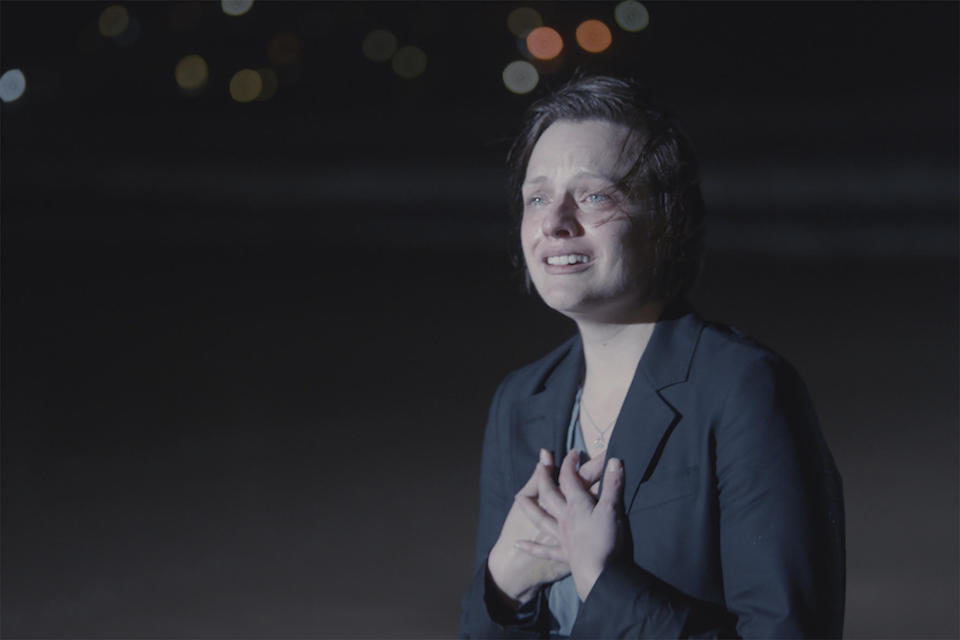
Or when it comes to acting, I admire work like Julie Hamilton’s in Holy Smoke, which is such a gorgeous and modest performance in perfect service to the film.
“Gorgeous” is exactly the word for her in that.
So I’m sure you’re attached to many elements and performances in all your films, but are there any specifically under-noticed gems in your films that you thought might have earned more attention at the time, and that you’re eager for people to spot this time around?
Well, again, I’ll admit I think In the Cut in general is a much better movie than it got reviewed as being.
I completely agree.
I also think The Portrait of a Lady is a film that I personally come back to a lot. I’ve seen it many times, and it’s such a strong story to keep coming back to. I love it for that reason, and I think it’s a good piece of work. And I think Nicole is far better in that than anyone gave her credit for. In fact, all the performances in that are pretty good. Martin Donovan is beautiful in it.
I’ll say that Bright Star is another one that has really stayed with me, especially in its tenderness. It was a film I made after a long gap, and I kind of had a big re-think on how I wanted to do things. I wanted to go as simple as I could be, rather than in any way showing off. To get there, I started looking at old films I’d first seen as a student, especially Bresson films, and in particular A Man Escaped—I guess I had distrusted that kind of simplicity so much that it became really riveting to me.
So, I had the space and time to really re-think the way I did things. I shot a short film before it, called The Water Diary, as a little try-out for this new approach. You know, it’s really hard to change your thinking after you’ve gotten used to falling back on things you think of as your strengths. But I really didn’t want to do that because they just didn’t impress me anymore. So, I took that direction, and I think Bright Star has a sweet tenderness to it and brought out a warmth in Keats’s story that I really like.
And that’s another film full of great performances, big and small.
Yes, I think so, too. Truly.
Of course, the FSLC retrospective is designed to foreground your own films as director, but for me, a big part of your career is the work by other filmmakers you have helped to produce or to shepherd, like Julia Leigh’s Sleeping Beauty a few years back, or Anahita Ghazvinizadeh’s They, which is still moving through festivals—
Oh, Anahita is absolutely remarkable. She sends me these almost novelistic or short story-like letters about her own process. So open and so incredible. I really love her and what she brings to her work. Of course, They will never be playing in general cinemas because it’s the kind of film that really rewards patience, and I don’t know how many people really have that sort of patience.
And Julia has become a good mate, too. She’s got that very tough, strong point of view, very formidable, and yet with the subtler details she’s really kind of a genius. She seems just to have not found that thing she wants to do next.
Given what you’ve described as your enthusiasm for collaboration, then, is this kind of advocacy work for other filmmakers something you look forward to doing more—helping to produce their work, or bring it to an audience?
Yes and no. It’s such a special arrangement that I think you just feel with certain people. And really, Julia and I were kind of forced onto each other because they weren’t going to give her the money unless someone like me said, “Yes. Great. She should have it.” And I actually thought she was really stubborn to begin with! Although brilliant at the same time, and of course a little stubbornness is good. She didn’t really want to do everything I thought should be done, but she’d say, “Oh, just trust me, It’s going to work. This is my process.” So I guess I just kept people off her back, especially when there were people who I don’t think understood the film very well, and thought she should be getting more coverage—when clearly, she was committing to a style that didn’t work with more coverage. There is no plan B, that’s it, you do it.
Anahita also works in that sort of way, and it takes a special vision and courage to be able to do it and seize the opportunities. I think Anahita’s film is really, really beautiful. Her work with actors is also really extraordinary. She does something we haven’t seen before, really, especially in telling a story about a child who doesn’t feel like they belong to the right gender but doesn’t know, basically, what gender they feel most comfortable with. And what I see in the film, given the delicacy of this young person, is that the whole question of gender is just too crass overall: “I’ve got a vagina, I’m a woman. I have a penis, I’m a guy.” None of it works. And certainly for this particular person, no gender could describe them. And to be frank, I don’t think gender describes me very well, either.
With the exciting news emerging about The Flamethrowers possibly being your next movie, how do you think it will feel now to return to feature filmmaking after this wonderful experience with Top of the Lake? Do you think your process will change in any way?
I don’t want to say too much about it, since I’m just starting. But one thing I do think I have come to appreciate is that feature films are more like short stories, compared to the endeavor of having just done something over six hours. It really wears you out, the stretched-out nature of it, even as it gives you so much more room. So I am looking forward to the challenge of something a little more concise!
Nick Davis is a professor of film, literature, and gender studies at Northwestern University. He also writes film reviews at www.NicksFlickPicks.com.



